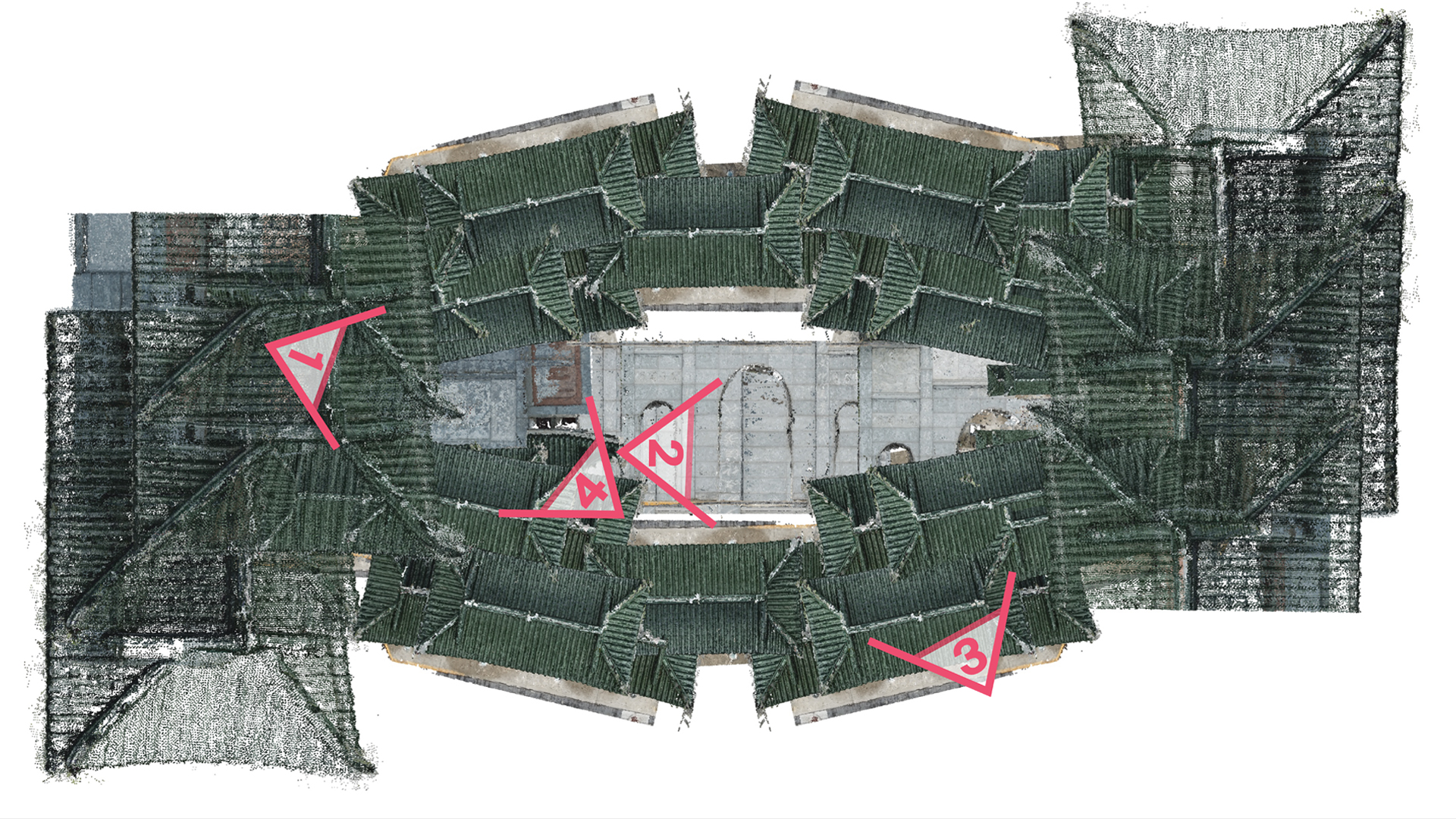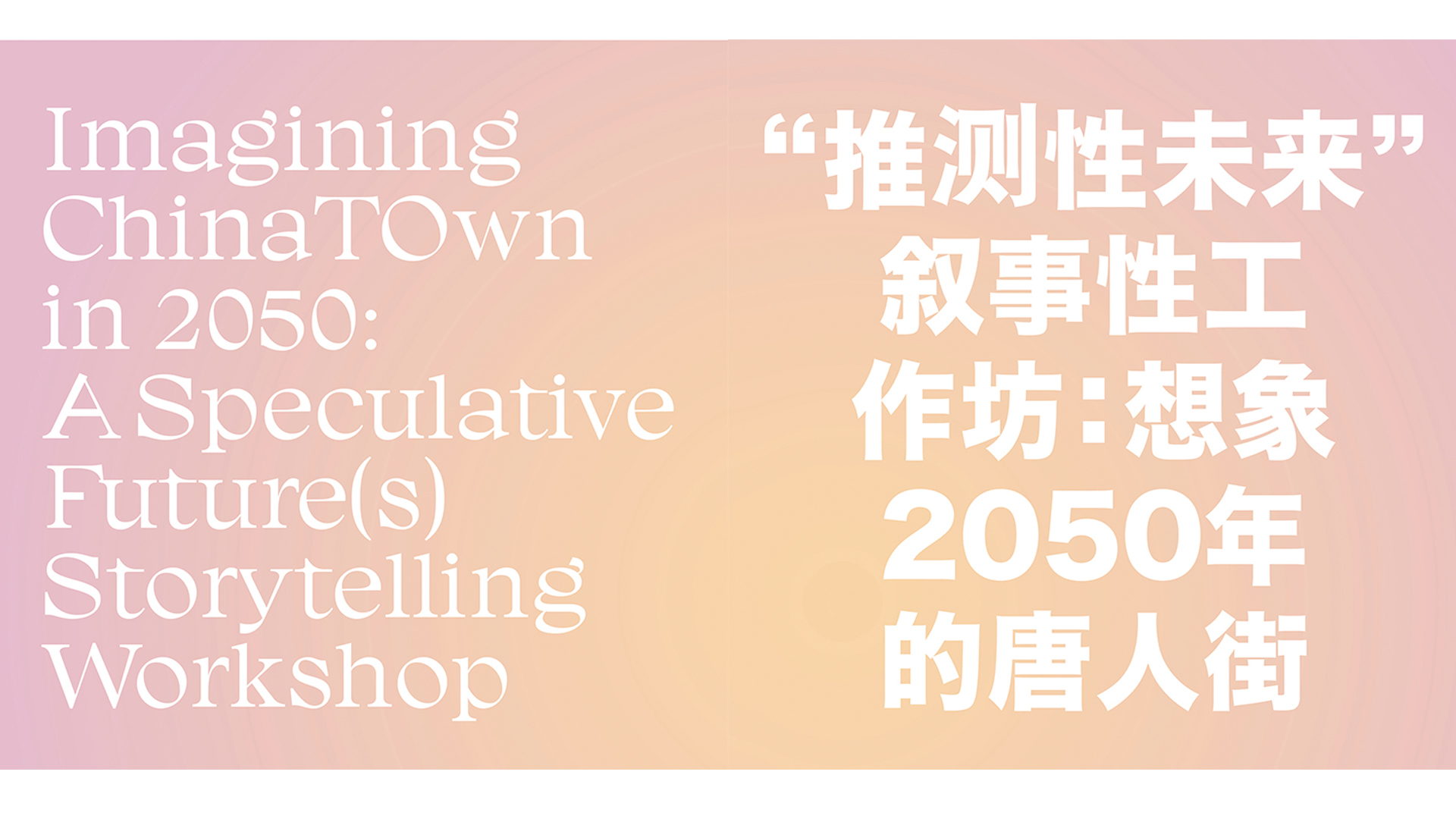![]()
Charting the Future of ChinaTOwn

Charting the Future of ChinaTOwn
A conversation with Toronto-based artist,
architect, and educator Linda Zhang.
Written by Diane Wong
March, 2021
March, 2021
While the pandemic has thrown businesses across North American into a tailspin, Chinatowns - whole neighbourhoods teeming with life, sound, and delicious smells - have been reduced to ghost towns. From targeted, racialized violence to anti-Asian rhetoric stemming from the problematic renaming of the Coronavirus to the "Chinese virus" by politicians south of the border, Chinatowns are struggling; financially, emotionally, and existentially.
In light of this issue, younger generations of Asian Canadians are stepping up with different initiatives to help save these storied communities and to offer assistance to their residents. A great example was the #IWILLEATWITHYOU campaign and the translations of governmental and financial support information for the community in a variety of Asian languages. Throughout 2020, it became obvious that we must depend on intergenerational collaboration to both preserve the heritage of Chinatowns, and to imagine a thriving future for the communities as a whole.
I had the opportunity to speak with Toronto-based artist, architect, and educator Linda Zhang, whose projects Build Your Own Chinatown board game and Imagining ChinaTOwn in 2050: Speculative Futures Storytelling Workshop, in partnership with Myseum Toronto, uses new technologies in heritage preservation to reimagine what Toronto's Chinatown could look like in the post-pandemic world.
An assistant professor at Ryerson SID and a principal at Studio Pararaum, Zhang’s research revolves around memory, cultural heritage, and identity as they are indexically embodied through matter, material processes, and reproduction technologies.
![Plan view of “Building Your Own Chinatown” VR space created from 3D scanned point clouds of Toronto’s Chinatown East Gate. Red markers coincide with camera view locations.]()
Your Future Heritage(s): A Build Your Own Chinatown
The project began with Zhang’s exploration of heritage preservation within Toronto’s Chinatowns. Alongside Jimmy Tran, the research technology officer at Ryerson's Library Collaboratory, Zhang was able to use drone technology and 3D printing to create this one-of-a-kind, build-your-own Chinatown game. The two researchers captured images of 99 historical buildings in Toronto's Chinatown and turned them into board-game-sized 3D models which became the basis of the game.
Within the game, players are asked to negotiate decisions of what is worth including in a community space. It asks each player to choose one piece at a time to fit in twelve available spaces and share why they have chosen certain pieces over others. The game examines the importance of architecture and identity in communities that are often overlooked by government institutions within “official” city planning. Their access to these new technologies that the community would usually not have access to plays a role not only in the reimagination of what the community could look like in the future, but an expansion of the resources used in heritage preservation
In light of this issue, younger generations of Asian Canadians are stepping up with different initiatives to help save these storied communities and to offer assistance to their residents. A great example was the #IWILLEATWITHYOU campaign and the translations of governmental and financial support information for the community in a variety of Asian languages. Throughout 2020, it became obvious that we must depend on intergenerational collaboration to both preserve the heritage of Chinatowns, and to imagine a thriving future for the communities as a whole.
I had the opportunity to speak with Toronto-based artist, architect, and educator Linda Zhang, whose projects Build Your Own Chinatown board game and Imagining ChinaTOwn in 2050: Speculative Futures Storytelling Workshop, in partnership with Myseum Toronto, uses new technologies in heritage preservation to reimagine what Toronto's Chinatown could look like in the post-pandemic world.
An assistant professor at Ryerson SID and a principal at Studio Pararaum, Zhang’s research revolves around memory, cultural heritage, and identity as they are indexically embodied through matter, material processes, and reproduction technologies.

Your Future Heritage(s): A Build Your Own Chinatown
The project began with Zhang’s exploration of heritage preservation within Toronto’s Chinatowns. Alongside Jimmy Tran, the research technology officer at Ryerson's Library Collaboratory, Zhang was able to use drone technology and 3D printing to create this one-of-a-kind, build-your-own Chinatown game. The two researchers captured images of 99 historical buildings in Toronto's Chinatown and turned them into board-game-sized 3D models which became the basis of the game.
Within the game, players are asked to negotiate decisions of what is worth including in a community space. It asks each player to choose one piece at a time to fit in twelve available spaces and share why they have chosen certain pieces over others. The game examines the importance of architecture and identity in communities that are often overlooked by government institutions within “official” city planning. Their access to these new technologies that the community would usually not have access to plays a role not only in the reimagination of what the community could look like in the future, but an expansion of the resources used in heritage preservation

Imagining ChinaTOwn in 2050: Speculative Storytelling
The Build Your Own Chinatown game was meant to be a part of a larger exhibition at the Cecil Community Centre in Chinatown West as a part of the Myseum Intersection Festival. A symposium was planned with different community members and artists who examine the heritage and identity of Chinatown.
Due to COVID-19, the Intersection festival was postponed to 2021. Instead, Myseum offered an opportunity for Zhang to adapt the project to online programming in April 2020. It was during this time when Anti-Asian xenophobia (and the visceral, news-worthy proof of this racialized violence) made many Asian Canadians feel unsafe to walk down the street. Zhang reached out to community members and speakers who were meant to be a part of the original exhibition’s symposium to create a space of generosity and care for the community to address what was happening in the world in real-time. Collectively they asked themselves: “What could we do for the community where we can offer a space of support to have conversations and provide an opportunity to imagine the future?”
The workshop series asked participants to reimagine what the Toronto Chinatown will look like in 2050. The facilitators included Zhang, Maxim Gertler-Jaffe, Tyler Fox, Biko Mandela Gray, Erica-Allen Kim, Morris Lum, Philip Poon, Howard Tam, Lexi Tsien, and Shellie Zhang. During the public workshop, the participants explored speculative fiction as a tool to imagine the impossible (or improbable). Each participant was able to share stories they developed through writing that imagined how the pandemic has radically reshaped our world and the impact it had on the Chinatown community.
Imagining ChinaTOwn in 2050: Speculative Futures Storytelling from MYSEUM OF TORONTO on Vimeo.
The Future of the Project:
For the project's next steps, Zhang hopes to publish a book containing 10 stories written during the speculative fiction workshop that will be released at Intersection Festival in 2021. Illustrations as well as a spatial virtual reality (VR) companion piece produced via 3D scan will accompany this anthology of stories.
In this next phase of the project, she hopes to make these new technologies accessible to older generations. This will be achieved through collaboration with a research group called Protech that hopes to make these types of resources accessible in public health education and pandemic response, especially for seniors residing in Chinatown. She also hopes to create a version of the speculative fiction that takes place on a shared VR platform, where people can use virtual reality as a space for healing, intergenerational exchange, and community resilience.

As we move forward in this new year, it is important to remember the impact 2020 had on not only our communities but ourselves; to take what we have learned in the past to imagine a better future, together.
Linda Zhang’s project including the Build Your Own Chinatown game is currently on view at the Griffin Art Project in Vancouver as a part of Whose Chinatown?, an exhibition curated by Karen Tam.
Acknowledgments:
This project was funded by Ryerson University, Faculty of Communication and Design, Myseum of Toronto, with in-kind donations from Ryerson University Creative Technology Lab at FCAD, Open Studios at FCAD, Ryerson University Library Collaboratory, and the RSID Fabrication Shop. The project is part of Museum of Toronto’s 2020 Intersections Festival which will be exhibited in 2021 due to COVID-19-related postponement. I would also like to thank the generous support of my research team by students Amy Yan, Georgia Barrington, Reese Young, Meimei Yang, and Margarita Yushina.
Land acknowledgment:
Toronto/Tkaronto is the traditional territory of the Mississaugas of the Credit First Nation, Anishinaabe, Haudenosaunee, and Wendat, and continues to be home to many Indigenous peoples. Together we all exist under the Dish With One Spoon Treaty and, as we learn from Indigenous teachings, it is our responsibility together to protect the land. I express my gratitude to the original caretakers of the land and am thankful to be working on this shared land. Toronto's Chinatown West is located along Spadina Ave which has its roots in the Ojibwe word "Ishpadinaa" (ish-pah-di-naw) which means "hill or sudden rise in the land." In the mid-18 century, the Anishinaabe peoples camped along what is now the northern end of Spadina Ave. The "sudden rise in land" provided a strategic vantage point to monitor activity to trade with the French at Fort Rouillé. While Chinatown West may be the most well-known Chinatown in Toronto today, there have been several Chinatowns on different lands, both downtown and in the Greater Toronto Area (GTA), both existing and erased. I invite readers to reflect on the lands of their respective Chinatowns beyond Toronto and to acknowledge and learn about the agreements of those lands, the nations that cared for and lived on those lands for thousands of years and continued to share and care for those lands today.
ABOUT THE AUTHOR
Diane Hau Yu Wong is an emerging curator and art historian based in unceded Coast Salish Territories & Tiohtiá:ke territory who graduated with a Bachelor of Fine Arts in Art History from Concordia University. Her practice and research are largely based on her experience as a second-generation immigrant and the intersection between community and diasporic identity. She is particularly interested in exploring digital futurism as a method to re-imagine a better world and sustainable solidarity among BIPOC communities through technoculture and science fiction.
Diane Hau Yu Wong is an emerging curator and art historian based in unceded Coast Salish Territories & Tiohtiá:ke territory who graduated with a Bachelor of Fine Arts in Art History from Concordia University. Her practice and research are largely based on her experience as a second-generation immigrant and the intersection between community and diasporic identity. She is particularly interested in exploring digital futurism as a method to re-imagine a better world and sustainable solidarity among BIPOC communities through technoculture and science fiction.








